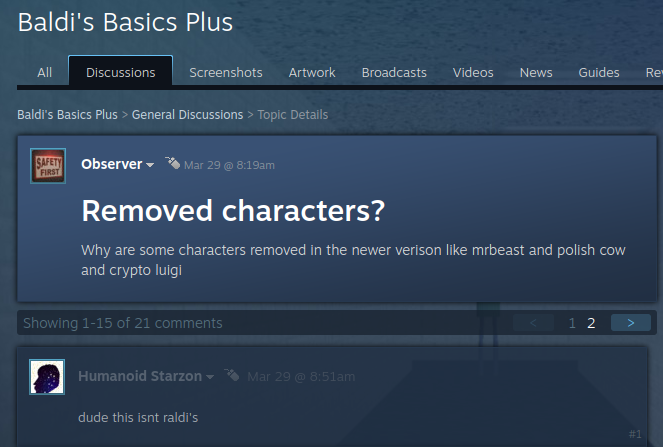- Joined
- Apr 29, 2011
- Messages
- 31,284
- Trophies
- 2
- Age
- 38
- Location
- Dr. Wahwee's castle
- XP
- 18,969
- Country

So, despite the fact that I'm past the free Windows 10 update period, I've been thinking long and hard on updating or rather, setting up a dual-boot OS configuration for my PC. Now my reasoning behind this may sound weird to some, I don't know, but my experience with Windows 7 has been for the most part, very stable and reliable, esp. compared to using Windows XP. There are, however, a few concerns that I'm not too sure about that force me to be on the fence.
- I have numerous programs installed on the C drive, where Win 7 is installed, if I install Win 10 on my second HDD, will all those previously installed on C:/ (Source Filmmaker, Steam/UPlay games) all still be able to be accessed but just need to make a shortcut for them?
- My particular WiFi adapter is a TP-Link Archer 12UH, and according to the manufacturer's site, there are no Windows 10 drivers, only 8/8.1, and also stating that there is only partial support with the 2.4/5 GHz bandwidth. This here is a potential deal-breaker for me, if I can't use my wireless adapter without it freaking out, there's really no point, and currently no way for me to use Ethernet as the router is in the room downstairs.
- Another thing is, driver compatibility with other devices, i.e my Realtek HD audio, I know that Microsoft would more than likely install default drivers for integrated audio, but I don't know how well they'd work. GPU drivers aren't an issue as nVidia has plenty for Win 10.
- I've been following or reading this guide here, http://www.pcadvisor.co.uk/how-to/windows/how-dual-boot-windows-7-or-8-with-windows-10-3633084/ on how to set up a dual boot OS config on my machine and it looks pretty straightforward, I essentially allocate 30 or so GB on my second HDD as a new partition and load the USB media from boot, and do a custom install and install Win 10 on the new partition.
What I want to know is, does installing it have any effect on the second HDD's data at all? Have most of the complaints that people said about Win 10's draconian anti-piracy detection or some crap like that? And finally, given that I missed the free update period, I would have use the KMS activation method to make it like a legit copy right? Not gonna ask for that here, obviously, but I assume it's fail proof and safe to use to activate. Sorry for the numerous questions, i want to dual boot OS in case something goes horribly wrong with 10, as my previous experience has not been uh ideal. I got the ISO from the Microsoft Update Tool, so at least I know that's safe enough.
Thank you for your time.
- I have numerous programs installed on the C drive, where Win 7 is installed, if I install Win 10 on my second HDD, will all those previously installed on C:/ (Source Filmmaker, Steam/UPlay games) all still be able to be accessed but just need to make a shortcut for them?
- My particular WiFi adapter is a TP-Link Archer 12UH, and according to the manufacturer's site, there are no Windows 10 drivers, only 8/8.1, and also stating that there is only partial support with the 2.4/5 GHz bandwidth. This here is a potential deal-breaker for me, if I can't use my wireless adapter without it freaking out, there's really no point, and currently no way for me to use Ethernet as the router is in the room downstairs.
- Another thing is, driver compatibility with other devices, i.e my Realtek HD audio, I know that Microsoft would more than likely install default drivers for integrated audio, but I don't know how well they'd work. GPU drivers aren't an issue as nVidia has plenty for Win 10.
- I've been following or reading this guide here, http://www.pcadvisor.co.uk/how-to/windows/how-dual-boot-windows-7-or-8-with-windows-10-3633084/ on how to set up a dual boot OS config on my machine and it looks pretty straightforward, I essentially allocate 30 or so GB on my second HDD as a new partition and load the USB media from boot, and do a custom install and install Win 10 on the new partition.
What I want to know is, does installing it have any effect on the second HDD's data at all? Have most of the complaints that people said about Win 10's draconian anti-piracy detection or some crap like that? And finally, given that I missed the free update period, I would have use the KMS activation method to make it like a legit copy right? Not gonna ask for that here, obviously, but I assume it's fail proof and safe to use to activate. Sorry for the numerous questions, i want to dual boot OS in case something goes horribly wrong with 10, as my previous experience has not been uh ideal. I got the ISO from the Microsoft Update Tool, so at least I know that's safe enough.
Thank you for your time.


